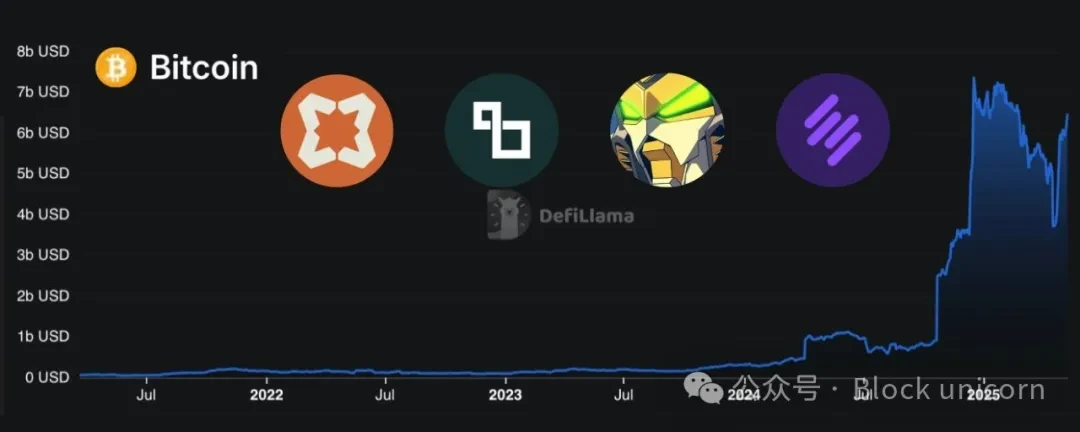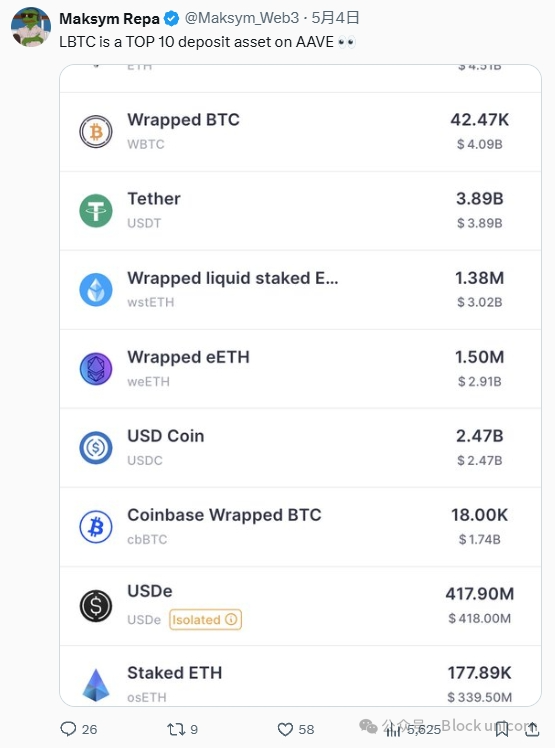Original Author: Chilla
Original Translation: Block unicorn
Introduction
Decentralized finance (DeFi) on Bitcoin is no longer just a theory. Despite some setbacks, the momentum around unlocking Bitcoin's potential beyond being digital gold is growing.
But to be honest: no one really cares. This is understandable, as things have been a bit chaotic until recently.
While Ethereum built a massive DeFi economy, Bitcoin has been sitting on the sidelines, with over $1.5 trillion in liquidity locked in cold wallets. The absence of DeFi smart contracts, a lack of decentralized wrapping/bridging (wBTC), and Bitcoin's identity as digital gold have limited the development around this orange currency ecosystem. But things are changing.
With a new wave of protocols launching on and around Bitcoin, we are seeing the foundation of a truly BTC-native DeFi stack. Projects like Babylon, Lombard, SatLayer, and Solv Protocol are leading the way in terms of technology and total value locked (TVL), each addressing different parts of the DeFi Lego.
Babylon: The Staking Layer for Bitcoin
Babylon can be likened to Ethereum's Beacon Chain, but designed specifically for Bitcoin. It is a native Bitcoin staking protocol with over $5 billion in TVL, a first of its kind.
What makes Babylon special is that it allows users to stake BTC directly on the Bitcoin mainnet without the need for bridging or wrapping. The coins remain in place, stored in a non-custodial manner.
But Babylon is not just about staking for the sake of staking. Its main innovation is extending Bitcoin's security to other blockchains, whether EVM chains, Rollups, or application chains.
Bitcoin holders can now help secure the network by locking up their coins and earn rewards from the chains they are securing.

Lombard: Liquid Staking for Bitcoin
It is the Lido for Bitcoin. Babylon handles the staking; Lombard makes it composable.
Thus, Lombard has $1.9 billion in Bitcoin-related TVL, built on top of Babylon. It allows users to stake BTC through Babylon and receive LBTC, a liquid staking token representing their staking position.
In fact, as we mentioned earlier, the BTC staked through Babylon remains locked on the BTC network. Therefore, without validating the consensus mechanisms of other networks, they are "useless." They cannot be used for DeFi. This is where Lombard comes in. Now, users can obtain liquid staking BTC (LBTC) and start trading, lending, mining, and all other similar activities.
Lombard earns yield by delegating BTC to Babylon validators, who in turn secure external networks and earn rewards, as mentioned earlier. These rewards are shared with LBTC holders. Simply put, the more chains validated by Babylon, the higher the yield for stakers.
Lombard is active in multiple ecosystems such as Sonic, Sui, and Base, and collaborates with protocols like Aave, Pendle, Ether.Fi, and Corn, showcasing its composability. It also played a significant role in the Boyco Berachain liquidity event, helping to kickstart early TVL.

SatLayer: The EigenLayer for Bitcoin
As the title suggests, SatLayer can be imagined as an Eigen Layer built on top of Babylon.
Although its TVL is the lowest on the list at $340 million, it introduces a new re-staking model. Babylon locks BTC to secure external networks at the consensus layer, while SatLayer allows users to re-stake LBTC to secure the application layer.
This opens the door to a market for yields directly from protected applications, such as an oracle paying re-stakers to ensure data integrity, or a Rollup paying re-stakers to ensure transaction validity, or a bridge paying to avoid slashing or fraud.
SatLayer supports re-staking on EVM and Sui networks.
Do You See the Big Picture Now?
Babylon serves as the foundational layer, providing consensus for the network;
Lombard acts as liquid staking, unlocking locked Babylon BTC;
SatLayer provides re-staking, offering economic security for the application layer.
Does the similarity to Ethereum, Lido, and Eigen Layer start to become apparent?
However, it is important to note that both Lombard and SatLayer currently rely on Babylon, but not vice versa.
SatLayer does not necessarily depend on Lombard, although given its decentralized nature, Lombard is currently the only solution it utilizes.
Solv Protocol: BTC Reserves and DeFi Vault
The Solv Protocol has $524.27 million in TVL within the BTC ecosystem, taking a different approach.
Similar to Lombard, it provides liquid staking for BTC but does not rely on Babylon and focuses on building its own Bitcoin reserve strategy and other DeFi products.
In fact, the SolvBTC token is a liquidity representation of its BTC reserve strategy, where users deposit a wrapped version of BTC, and then Solv converts most of it into native BTC through institutional channels and stores it via centralized custody.
While Solv does not rely on Babylon, it benefits from Babylon-related assets like LBTC. In turn, thanks to its DeFi vault, it offers higher composability.
Conclusion
DeFi on Bitcoin is no longer just a pipe dream. With the emergence of new protocols and the increase in liquidity, we may be witnessing a new era of decentralized yield on Bitcoin.
This is no longer just about wrapping BTC onto Ethereum, but about unlocking native BTC DeFi.
As more projects like Botanix launch EVM-compatible Bitcoin blockchains, the composability and potential value of these layers could soar. Billions of idle BTC may soon become active collateral, helping to validate networks, secure applications, and earn real yields.
Institutional investors are flocking to Bitcoin, and they love this yield.
免责声明:本文章仅代表作者个人观点,不代表本平台的立场和观点。本文章仅供信息分享,不构成对任何人的任何投资建议。用户与作者之间的任何争议,与本平台无关。如网页中刊载的文章或图片涉及侵权,请提供相关的权利证明和身份证明发送邮件到support@aicoin.com,本平台相关工作人员将会进行核查。




